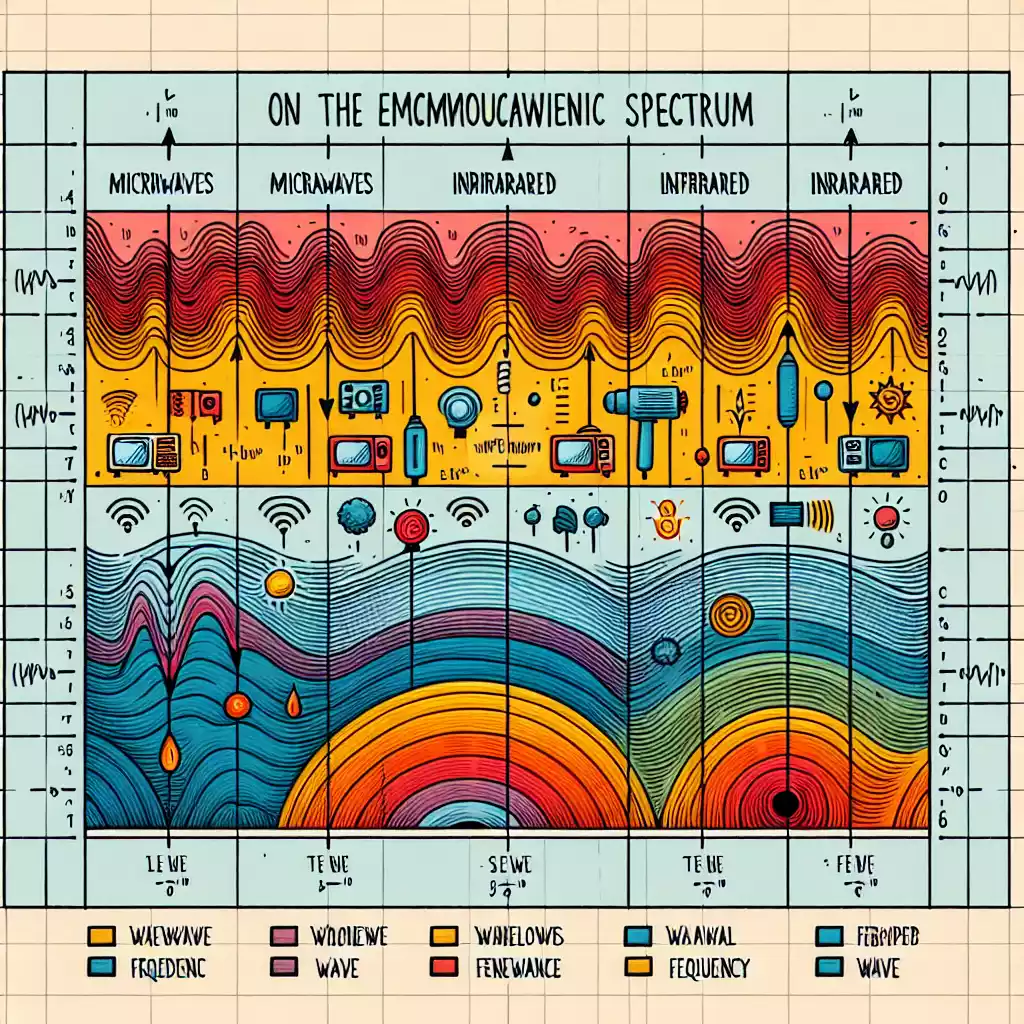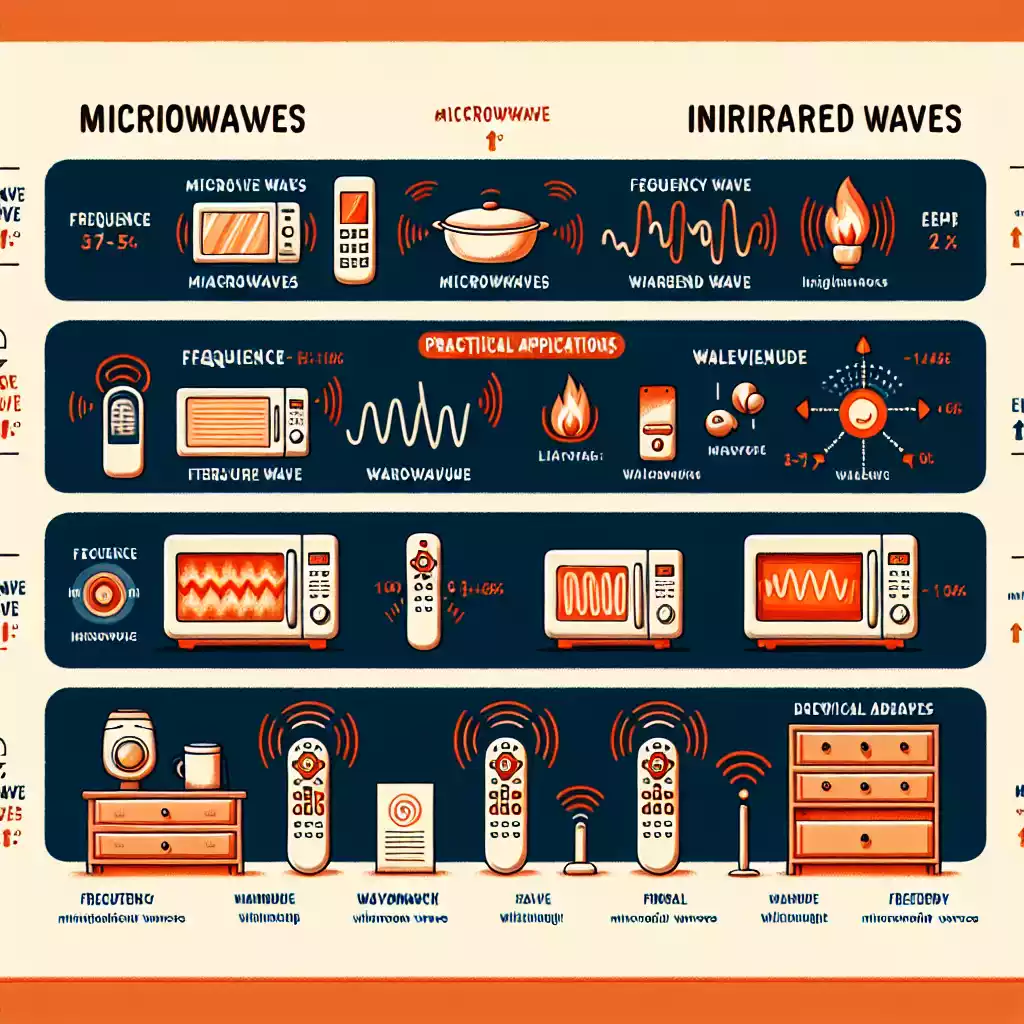Introduction
The electromagnetic spectrum is like a grand orchestra, with each type of wave playing its own unique part. Microwaves and infrared waves, while both integral members of this symphony, have distinct characteristics that set them apart. To understand whether microwaves are a type of infrared wave, we need to dive into their properties, uses, and how they interact with the world around us.
Microwaves, often associated with kitchen appliances, have a range of applications from communication to medical treatments. Their ability to penetrate various materials makes them invaluable in technology and science. On the other hand, infrared waves, known for their heat-producing properties, play crucial roles in thermal imaging, remote controls, and even astronomy. By comparing these two types of waves, we can unravel their differences and similarities, providing a clear answer to our question.
Understanding Electromagnetic Waves
The Electromagnetic Spectrum
The electromagnetic spectrum encompasses all types of electromagnetic radiation, from gamma rays to radio waves. Each type of wave has a specific wavelength and frequency, determining its energy and use.
Characteristics of Electromagnetic Waves
Electromagnetic waves travel at the speed of light and exhibit both electric and magnetic field components. Their wavelength and frequency are inversely related—shorter wavelengths have higher frequencies and vice versa.
Historical Context of Electromagnetic Waves
The study of electromagnetic waves dates back to the 19th century, with pioneers like James Clerk Maxwell and Heinrich Hertz. Maxwell’s equations laid the foundation for understanding electromagnetic fields, while Hertz’s experiments confirmed their existence.
What Are Microwaves?

Properties of Microwaves
Microwaves have wavelengths ranging from 1 millimeter to 1 meter and frequencies between 300 MHz and 300 GHz. Their ability to penetrate various materials makes them ideal for communication and cooking.
Applications of Microwaves
• Microwave Ovens: Microwaves excite water molecules in food, generating heat and cooking the food quickly.
• Communication Technologies: Microwaves are used in radar, satellite communication, and Wi-Fi.
Microwave Radiation and Health
While microwaves are generally safe, excessive exposure can cause burns. Modern microwave ovens have safety features to prevent such risks.
What Are Infrared Waves?
Properties of Infrared Waves
Infrared waves have wavelengths between 700 nanometers and 1 millimeter, with frequencies ranging from 300 GHz to 430 THz. They are primarily known for their heat-producing capabilities.
Applications of Infrared Waves
• Thermal Imaging: Infrared cameras detect heat emitted by objects, useful in various fields like medicine and security.
• Remote Controls: Infrared signals are used in remote controls for TVs and other electronic devices.
Infrared Radiation and Health
Infrared waves can be beneficial in therapies like heat treatments but excessive exposure may cause burns or eye damage.
Comparing Microwaves and Infrared Waves
Differences in Wavelength and Frequency
Microwaves and infrared waves differ significantly in their wavelength and frequency ranges. This difference affects their energy levels and how they interact with matter.
Interaction with Matter
• Microwaves: Penetrate and excite water molecules, making them ideal for cooking.
• Infrared Waves: Absorbed by surfaces, generating heat, useful in thermal imaging and heating applications.
Common Misconceptions
Misconception 1: Microwaves Are a Type of Infrared Wave
Microwaves and infrared waves are distinct parts of the electromagnetic spectrum. Microwaves have longer wavelengths and lower frequencies compared to infrared waves.
Misconception 2: Microwaves Cause Cancer
Scientific evidence does not support the claim that microwaves cause cancer. Regulatory standards ensure that microwave devices are safe for everyday use.
Historical Development of Microwave and Infrared Technologies
Evolution of Microwave Technology
From early radar systems in World War II to modern kitchen appliances, microwave technology has evolved significantly, finding applications in various fields.
Evolution of Infrared Technology
Initially used in military applications, infrared technology now plays a role in everyday life, from remote controls to medical diagnostics.
Practical Tips for Using Microwave and Infrared Devices
Safe Use of Microwave Ovens
– Avoid using metal containers.
– Ensure the door seals properly.
– Do not overheat liquids to prevent “superheating.”
Effective Use of Infrared Devices
– Regularly clean the lenses of infrared cameras.
– Use protective eyewear when working with high-intensity infrared sources.
Future Trends in Microwave and Infrared Technologies
Innovations in Microwave Technology
Emerging applications include advanced communication systems, medical treatments, and industrial heating processes.
Innovations in Infrared Technology
Infrared technology is advancing in areas like night vision, environmental monitoring, and even space exploration.
Relevant Data Tables
| Property | Microwaves | Infrared Waves |
|---|---|---|
| Wavelength Range | 1 mm to 1 meter | 700 nm to 1 mm |
| Frequency Range | 300 MHz to 300 GHz | 300 GHz to 430 THz |
| Common Uses | Cooking, Communication | Thermal Imaging, Remote Controls |
| Interaction with Matter | Microwaves | Infrared Waves |
|---|---|---|
| Penetration Ability | High | Low |
| Heat Generation | Excites water molecules | Absorbed by surfaces |
| Safety Concerns | Burns from overexposure | Burns and eye damage from high intensity |
FAQs
FAQ 1: Are microwaves harmful to humans?
Microwaves are generally safe when used correctly. Overexposure can cause burns, but modern microwave ovens have safety features to prevent this.
FAQ 2: Can infrared waves be seen by the human eye?
No, infrared waves are not visible to the human eye but can be detected as heat.
FAQ 3: Do microwaves and infrared waves travel at the same speed?
Yes, all electromagnetic waves travel at the speed of light in a vacuum.
FAQ 4: How do microwave ovens cook food?
Microwave ovens use microwaves to excite water molecules in food, generating heat and cooking the food.
FAQ 5: What is the primary difference between microwaves and infrared waves?
The primary difference lies in their wavelength and frequency, which affects their energy and applications.
Conclusion
Microwaves and infrared waves, while both part of the electromagnetic spectrum, have distinct properties and uses. Understanding these differences is essential for their effective and safe application in various fields. By exploring their characteristics, applications, and common misconceptions, we gain a comprehensive understanding of these fascinating types of electromagnetic waves.

